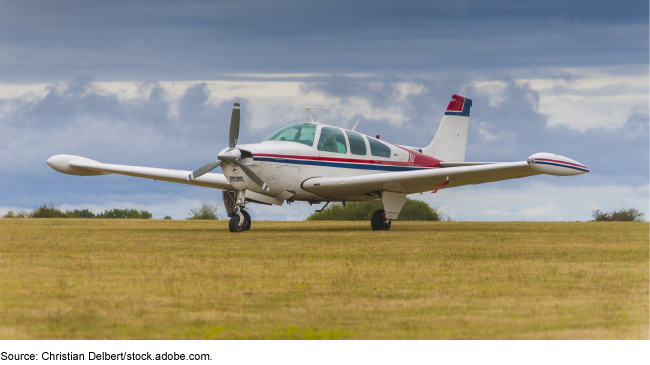General Aviation: Stakeholders Expressed Mixed Views of FAA Policies on Private Pilot Expense Sharing
Fast Facts
The Federal Aviation Administration allows private pilots to reduce costs by carrying passengers and sharing certain flight expenses with them. But private pilots cannot engage in "common carriage" (i.e., notifying the public they will fly for compensation). For example, pilots can't use the internet to find passengers or they are subject to FAA's more stringent regulations for commercial air carriers.
Many stakeholders, like general aviation pilots, saw benefits in expense sharing, but had mixed views on FAA's guidance for it. Stakeholders were split on whether the FAA should let pilots use the internet to find expense-sharing passengers.

Highlights
What GAO Found
The Federal Aviation Administration's (FAA) primary rationale for its policies on private pilots' sharing expenses with passengers is based on passenger expectations of safety. FAA policies allow private pilots to share the cost of certain flight expenses with passengers but prohibit these pilots from engaging in “common carriage,” which is communicating to the public a willingness to fly in exchange for compensation. These policies generally prohibit pilots from using the internet to find passengers. FAA officials said these policies are in place because they are concerned the public might expect a similar level of safety on private expense-sharing flights as commercial flights. However, the safety record of commercial aviation is better than that of private flying (general aviation). For example, according to data from the National Transportation Safety Board (NTSB), commercial carriers had a fatal accident rate around 30 times lower than general aviation in 2018. FAA officials said their goal for FAA's 2020 guidance on expense sharing was to restate and clarify existing policies.
Example of an Aircraft Private Pilots Could Use for Expense-Sharing Flights

Stakeholders described benefits of expense sharing but expressed mixed views on FAA's policies and guidance. For example, stakeholders cited potential economic benefits to the general aviation sector and a potential expansion of the pool of future professional pilots as benefits of expense sharing. Most (eight of 13) stakeholders said FAA's 2020 guidance on expense-sharing is clear and provides sufficient information. However, some stakeholders said the guidance could provide more definitive examples of allowed expense-sharing flights, and others disagreed with how FAA defined certain concepts such as how pilots can be compensated for flying passengers. Also, stakeholders split on whether FAA should allow pilots to use the internet to find expense-sharing passengers. Seven of 15 stakeholders, including four representatives from companies with expense-sharing applications, said FAA should allow pilots to use the internet to find these passengers by citing, for example, ongoing positive experiences in Europe. However, eight stakeholders, including six of seven professional organizations, said FAA should not. These stakeholders cited safety-related risks of expense sharing including what they characterized as FAA's limited capacity to enforce current regulations and flights using less experienced pilots.
Why GAO Did This Study
Private flying is expensive, and FAA allows private pilots to reduce their costs by carrying passengers and sharing certain flight expenses with them. However, private pilots cannot engage in common carriage. If pilots do engage in common carriage, they are subject to FAA's more stringent regulations covering commercial air carriers. Some private pilots have sought to use internet applications to find expense-sharing passengers.
The FAA Reauthorization Act of 2018 directed FAA to issue advisory guidance clarifying how private pilots may share expenses. In February 2020, FAA released this guidance as an advisory circular. The Act also includes a provision for GAO to review FAA's policies on expense sharing. This report describes: (1) FAA's rationale for its policies on how private pilots may find expense-sharing passengers and (2) selected stakeholder perspectives on FAA's policies and the risks and benefits of arranging these expense-sharing flights online.
GAO interviewed FAA officials on how FAA developed its policies and guidance related to expense sharing. GAO also reviewed FAA's data on enforcement actions related to expense sharing and safety data from NTSB. In addition, GAO interviewed a non-generalizable sample of 15 private-sector stakeholders, including professional organizations, such as trade groups representing general aviation pilots, companies that developed expense-sharing internet applications, and flying clubs.
For more information, contact Heather Krause at (202) 512-2834 or krauseh@gao.gov.
